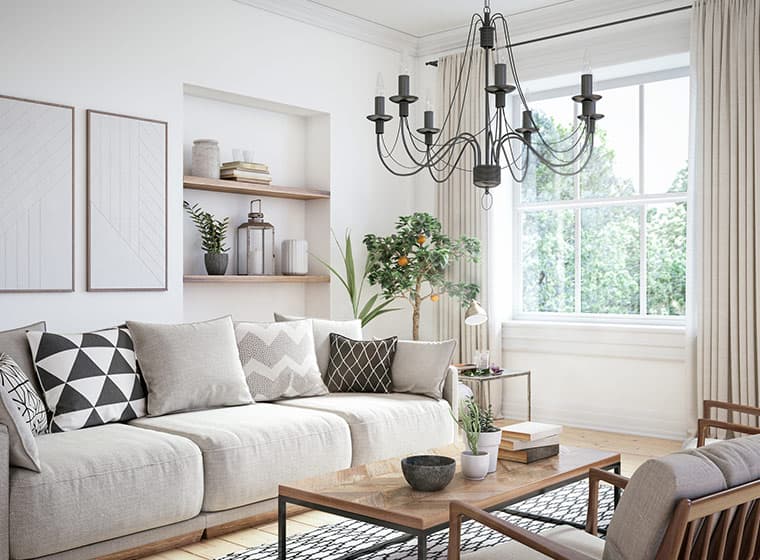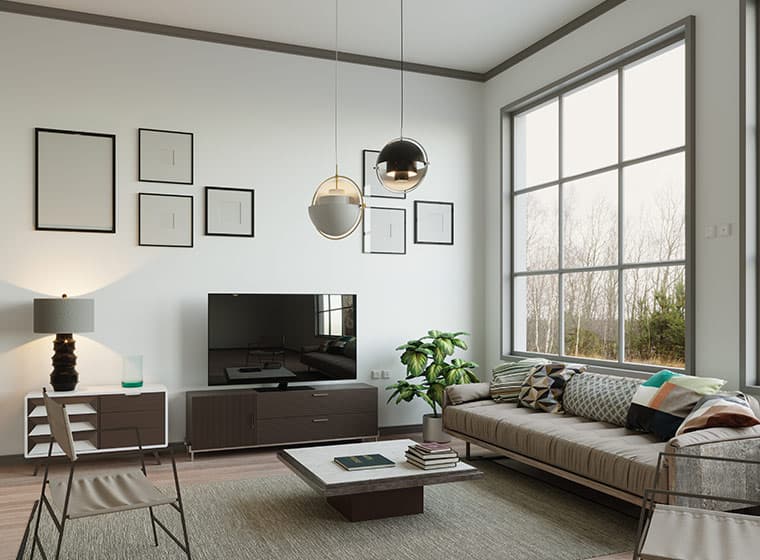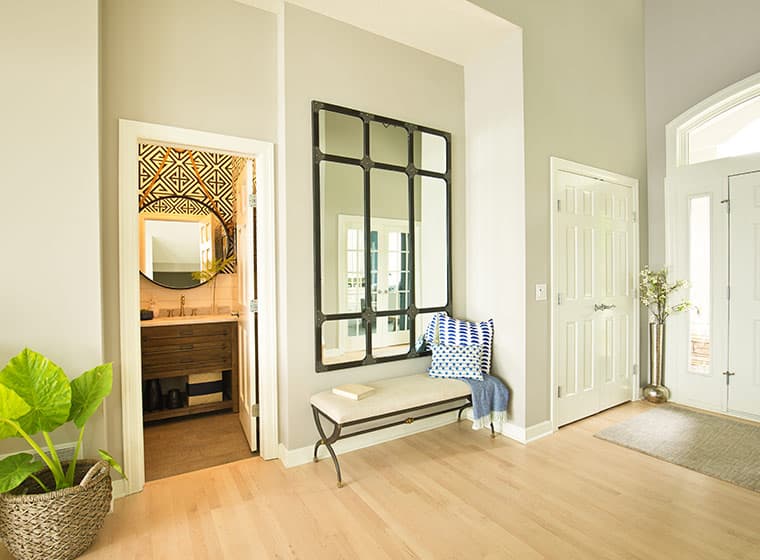When you're painting a room, your main focus is typically the walls. However, it's just as important to carefully consider how paint will look on the trim and molding in your space. With trim and molding, most people stick to neutral tones to complement the main colors in the room, with the real consideration being around the type of paint finish.
What kind of paint do you use on trim?
When it comes to painting trim and molding, you can buy paint that is specifically designed for this purpose. Trim paint typically has a glossier sheen and is designed to have a thicker consistency (similar to oil paint) for smoother application. However, you don't necessarily need to use paint that is labeled as trim or molding paint.
If you are using regular paint instead of trim paint, you'll need to consider what type of finish you're after. Which type of finish you use depends on a few factors, such as where you're using it and the overall look you want in your room.

What is the best finish for trim?
When choosing the type of finish for your trim, you'll want to consider the type of surface you're painting and how it will stand up to wear and tear.
- High gloss: this shiny enamel finish can look really high-end, but it can also show off any flaws in the surface. If using high-gloss, you need to make sure your surface is perfectly smooth and the application must be perfectly smooth as well. If not done correctly, you'll be able to see any brushmarks and any small flaws due to how the light reflects off the paint.
- Semi-gloss: this is the standard finish for trim and molding. It has an element of shine like high gloss, but the slightly more dull finish is better at hiding imperfections. It's also quite durable and is easy to clean, which makes it great for high traffic areas.
- Satin: this matte finish works well to make heavy, ornate trim work less imposing and create an overall more modern look. It's also easy to clean and looks great in more rustic or minimalist spaces.

How do you prepare trim for painting?
The key to getting a great finish on trim and molding is to ensure you start with a smooth surface. It tends to be the type of surface that shows off any imperfections, which can have an impact on the overall look of your room. If there are any dents, nail holes, or cracks in your trim or molding, you'll need to repair them with wood filler to smooth out the surface.
Do you have to sand before painting trim?
What makes trim and molding tricky to paint is that any uneven surfaces will show up. These are very hard to cover up. Before painting trim or molding, it's best to sand down the entire surface to smooth things out. As you sand, be sure to work in small sections so you don't miss any rough spots.
After sanding, wipe it down with a damp cloth and allow it to dry. Note that if you have filled and sanded any areas, you only need to use primer on those areas and any spots where the wood is showing through. Otherwise, you can paint the trim directly without priming the




